SJIJ : Mostly scraps
This garment is an excellent example while I say that Sew Japanese in January (SJIJ) doesn’t have a firm cut-off date! I started this project while holidaying at the beach in January but discovered mid-make that I didn’t have any black interfacing.
I ordered some online, but by the time it arrived a week later I had moved onto other projects, and this scrap busting shirt then had to wait a few months until I had the time, and the head space, at Easter to finish it off.
I have to say… I just love the outcome and I’m now going to bombard you with all the photos!
But perhaps I should take a few steps back… what is Sew Japanese in January you ask? It’s an Instagram hashtag #sewjapaneseinjanuary to inspire and motivate people to sew from their Japanese pattern and/or fabric stash during the month of January. There are no sponsors or giveaways, it’s a community event on Instagram that anyone can join in. To account for seasonal differences between hemispheres #sewjapaneseinjuly is a thing too! I encourage you to look at both the hashtags as there are lots of inspiring makes from sewists around the globe.
The pattern I used was from my favourite Japanese pattern book called “Big clothes, small clothes” by Asuka Hamada (ISBN978-4-579-11563-1). I sewed the small version of the short sleeve shirt (Pattern i) in a size 2.
One thing that I love about this book is that it includes finished measurements. These measurements assisted me in choosing my size and deciding to remove 4″ (10cm) from the length of the shirt. In hindsight, I could have probably sewn the size 1, but I don’t mind the oversized look of the size 2.
The pattern features that make my heart sing include the deep inverted pleat at the back and the shirt tail hem.
Now let’s talk fabric. These three colours are all part of a lightweight linen range at work. The rust and teal linen were left over from other makes and I had to buy a length of the navy… hence this blog title includes the work ‘mostly’!
I roughly sketched a shirt and took out my colour pencils to determine the colour placement.
What I hadn’t anticipated was that the teal front would look best over the top of the navy. I think that this is due to the collar and collar stand being teal. Anyway, it’s meant that my shirt is buttoned like a men’s shirt (ie. buttons on the right). Am I fussed about this… not one little bit!
The right button choice was always going to be shell buttons. These are the 13mm Natural Akoya from work.
Pattern: Shirt ‘i’ from “Big clothes, small clothes” by Asuka Hamada (ISBN978-4-579-11563-1)
Size: Size 2
Fabric: 100% lightweight linen from The Cloth Shop and 13mm Shell Button – Natural Akoya
Alterations: Shortened the body by 4″ (10cm) and performed a 3/8″ (1cm) forward shoulder adjustment
Outfit: Jeans from Levi, shoes from Manteau Noir, paperclip chain necklace (a gift) and earrings from Emma Donald Jewellery
Photo Location: Eastern Suburbs, Melbourne




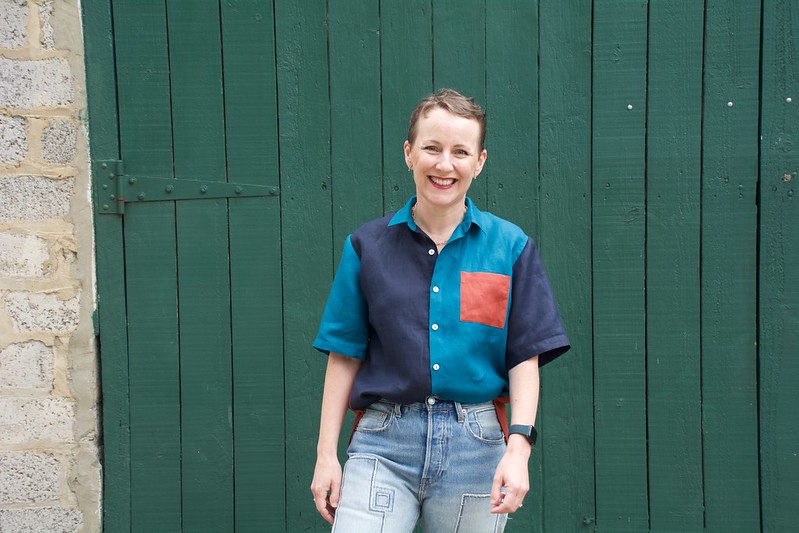

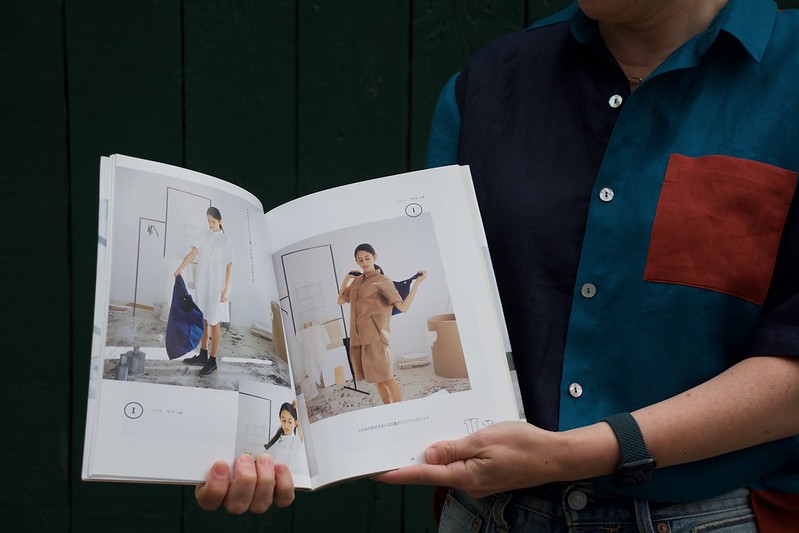
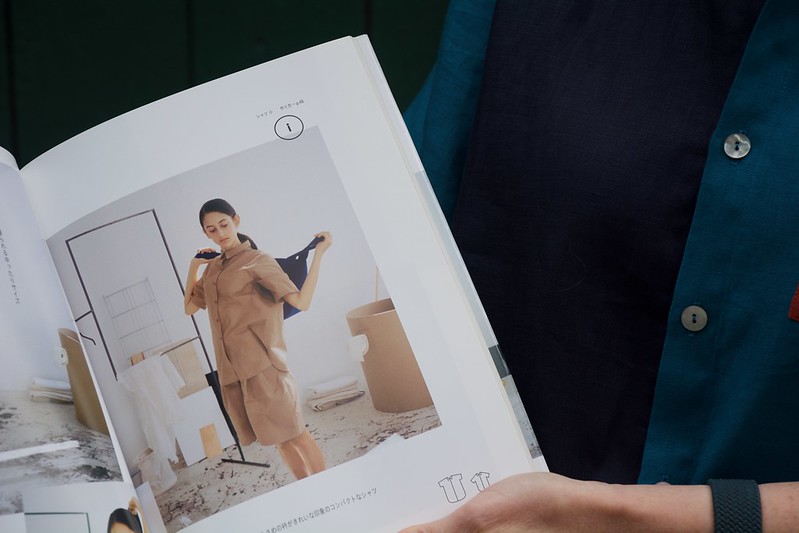

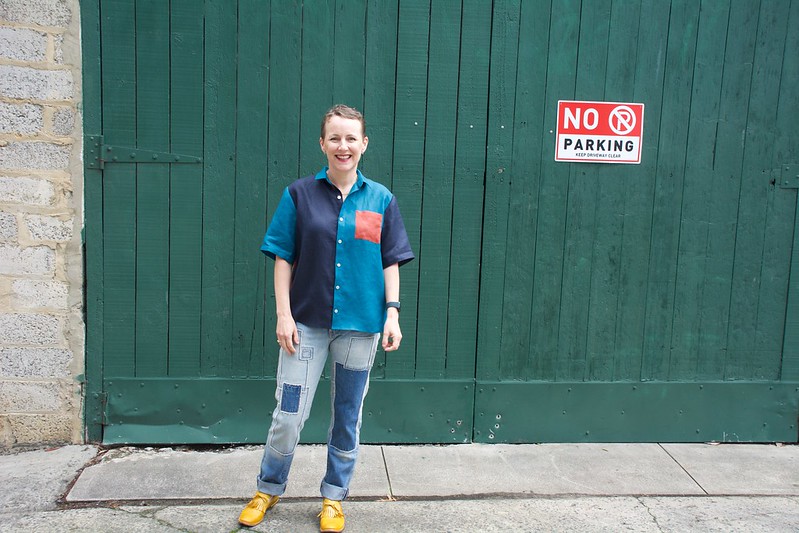

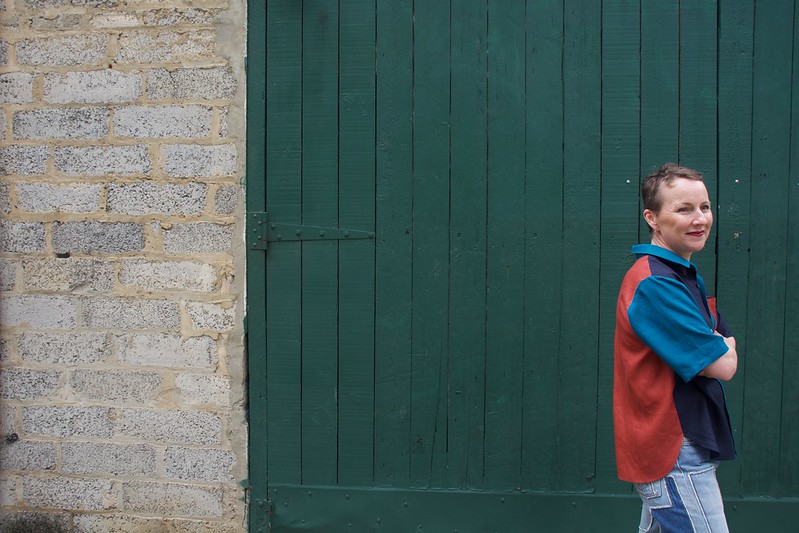
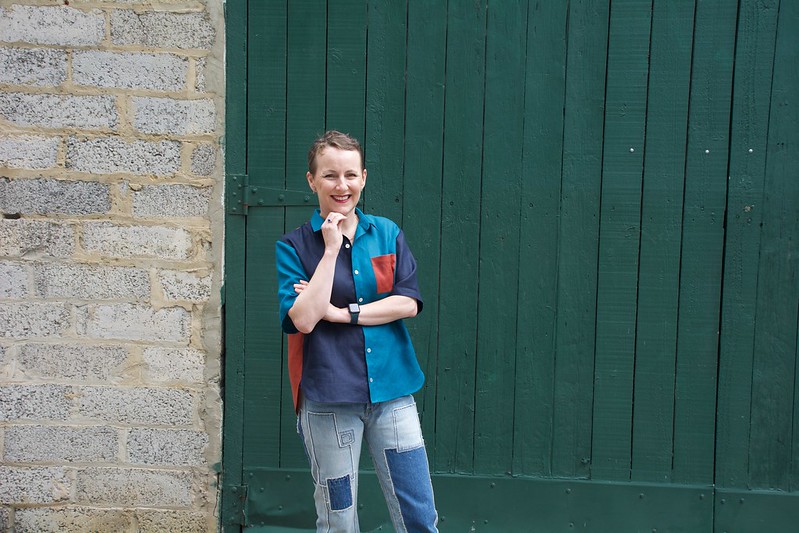
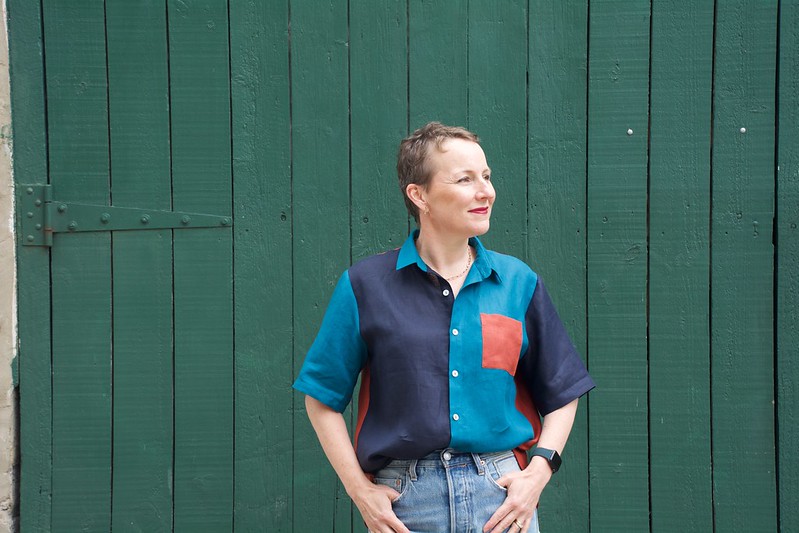
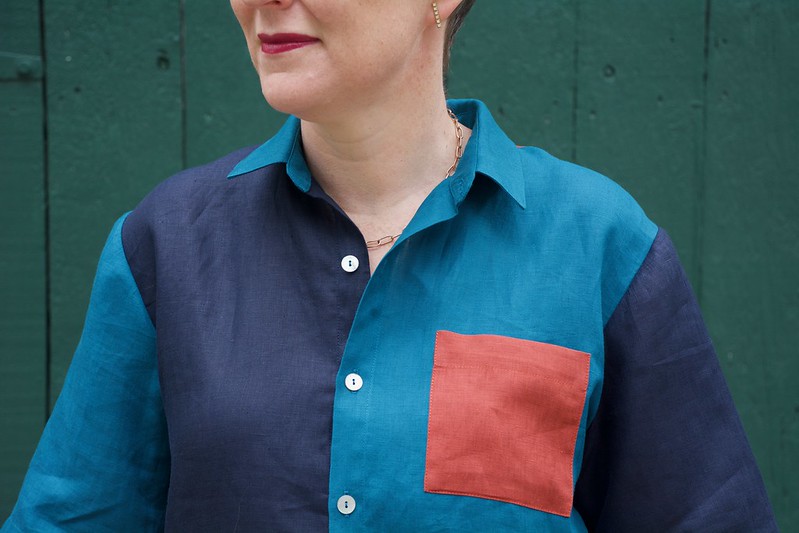
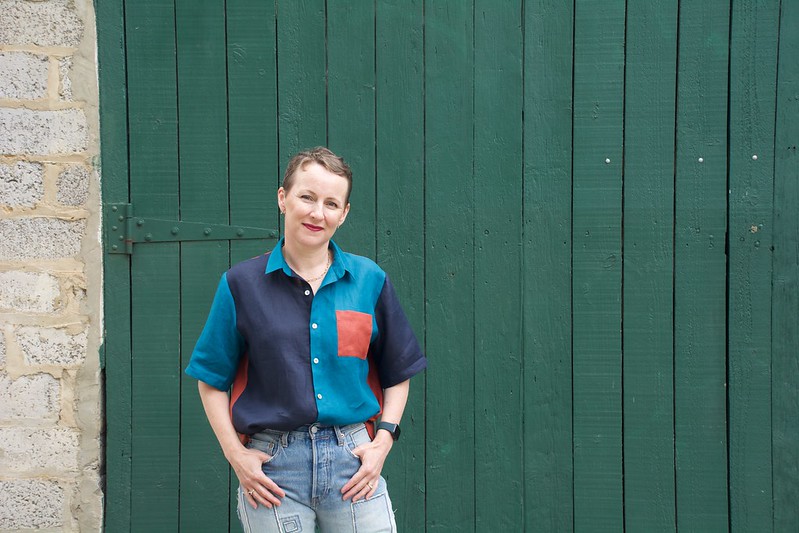

Hi Anna, love your shirt! The book looks great – I’m a size 4 and always have to alter patterns. The blog site also looks very interesting, so thanks!
Hi Lili. Thanks for your kind words. I think that altering patterns is standard for a great majority of makers. It definitely creates a challenge!
That’s a great use of smaller remnants! Do you read Japanese? I’ve hesitated to get Japanese pattern books since I don’t, including the coat one that started MainelyMensWear on his sewing journey. Thanks, I always enjoy your posts! 😊
I don’t read a word of Japanese, but I am a visual learner so the diagrams give me the information I need most of the time. If I get stuck, I use the google translate app on my phone.